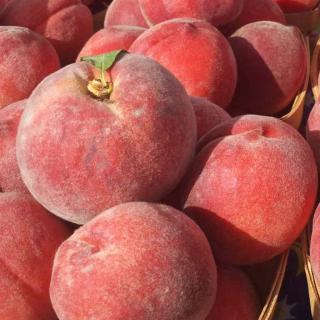

Peach and nectarine is ideal under the shade of parasols. Here are a few fun facts about peach to read through.
World facts on peach and nectarine
World Production(1): 24+ million tons
Enough for 20 peaches for everyone in the world!
Top 3 production areas – China, Turkey, European Union
Availability – June to September
Main season – July to August
Nutrition (3) – 3.5 oz (100 g) of nectarine peaches are equivalent to 54.2 kcal
The summer season calls for light food and refreshing nutrients on meal tables. Peaches are perfect, and here are the facts to prove it!
Peaches and nectarines are delicate fruits that require a lot of care from the planting of the tree up to the harvesting of the fruits.
A peach tree is usually planted in fall. You will have to wait for 7 years before it bears its first fruits. The blooming is best between the end of winter and the beginning of spring. Peach trees are self-fertile, meaning they don’t require pollination to bear fruits.

The lifespan of a peach tree varies from 15 to 20 years, but it only produces fruits over a span of 10 days during the year. To compensate for this very short production window, and still offer fruits all summer long, it is very common to see multiple varieties planted in any given orchard, with staged fruit-bearing periods.
The nectarine and the plum-peach are two varieties of peach that are known for their smooth, shiny skin. The stone is how you can tell them apart: plum-peach stones adhere to the flesh, whereas nectarine stones are easily separated from it. Some also call this difference “clingstone” and “freestone”.
Five hundred years before our era, peach was already cultivated in Southern China. It followed the Silk Road across the Asian continent and reached the Middle East, Persia and Egypt. In olden days, it was even called the “Persian apple”, hence the botanical name persica. Alexander the Great encountered it and brought it back to Europe where it has been grown since the Middle Ages.
In the XVth and XVIth centuries, France became the regional hub for this production, with over thirty varieties being grown in the gardens of Louis the XIVth, among which appeared the ‘Belle de Chevreuse’, ‘Belle de Vitry’ and the ‘Teton de Venus’ (Venus’ nipple!).
At the time, peach trees were grown in espalier in front of whitewashed walls that would reflect the sun’s heat and light.
The nectarine, a special, smooth-skinned variety, was mentioned in French records of the XVIth century, as a mutation that removed the fuzz from the peach’s fruit.
Peaches and nectarines must be harvested at exactly the right moment, because they stop maturing once they’re picked. The fruit must give slightly, the skin must be free of blemishes and wounds, and it must release a sweet fragrant smell.
Best choose fruits from crates that have padding: fruits will have been better protected during rattling transportation.
Peaches and nectarines can keep in a cool spot, but not the refrigerator which tends to annihilate flavor and makes the flesh mealy.
The best configuration is to place your fruits in a wide bowl and eat them within a couple days.
Peaches and nectarines can be eaten in any manner of ways. Bite them raw and lick the juice from your fingers.
In fruit salads, they are delicious with other summer fruits. Cooked and baked, they flavor pies, puff pastry and crumbles.
Poached or fried in a pan, they match any dish prepared with duck, fowl, veal liver or crab.
Reduce them in marmalade, jam or coulis, so that you can taste those peaches and nectarines all year long.
Sources: (1) FAS/USDA – (2) Kantar Worldpanel 2013 – (3) Ciqual 2013